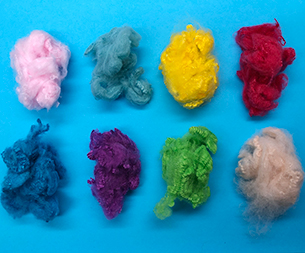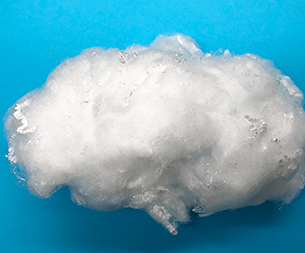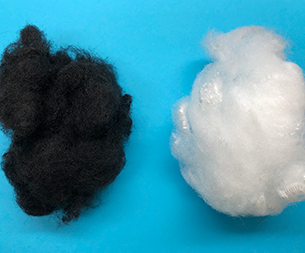China is the largest country in the global textile industry. The textile industry not only provides people with daily textile products such as clothing, but also provides a large number of industrial textiles for economic and social development. At the end of the "Thirteenth Five-Year Plan", the processing volume of industrial textile fibers has accounted for 33% of the total national textile fiber processing. During the "14th Five-Year Plan" period, how will industrial textiles develop? The Ministry of Industry and Information Technology and the National Development and Reform Commission recently jointly issued the "Guiding Opinions on the High-Quality Development of the Industrial Textile Industry", which clarified the "roadmap" for development.
It is understood that industrial textiles are mainly used in industry, agriculture, infrastructure, medical care, environmental protection and other fields. They are an important part of the new material industry and an important direction for the high-end textile industry. Space suits and deep-sea cables in the high-tech field, masks and protective clothing in epidemic prevention and control are all industrial textiles.
In the past two years, the industrial textile industry has actively ensured the supply of anti-epidemic materials such as masks and protective clothing, with an average annual growth rate of double digits. At the same time, the development of the industry is also facing new situations such as tightening factor guarantees, pressure on product exports, rising production costs, and complex external environment.
The "Guiding Opinions" made it clear that accelerating the development of the industrial textile industry is an important force for expanding domestic demand, smoothing the circulation of the industrial chain, and expanding the development space of the textile industry. In the next few years, it is necessary to actively expand the application of industrial textiles in aerospace, medical and health, emergency rescue, marine fishery and other fields. By 2025, the industrial added value of enterprises above designated size will increase by about 6% annually, and 3 to 5 enterprises will enter the first echelon of global industrial textiles. The ability of scientific and technological innovation has been significantly improved. The R&D expenditure of key enterprises in the industry accounts for 3% of the main business income, the application of recycled fibers and biomass fibers accounts for 15%, and the numerical control rate of key processes of nonwovens enterprises reaches 70%. Manufacturing and green manufacturing play a significant role in improving the quality and efficiency of the industry, and the overall competitiveness of the industry is further enhanced.
To achieve this series of goals, technological innovation is the focus. It is reported that the textile industry will strengthen research on common basic technologies. Carry out basic research on nonwovens spinning, web forming and forming, improve the stability of special fiber web forming and biodegradable polymer spinning and web forming technology, and promote the industrialization of nano and micro fiber nonwoven fabric technology.
The industrial textile industry will also actively cultivate new formats and new models, increase the development of smart textiles, and promote smart wearable products for sports, medical health, and safety protection.
Energy conservation and emission reduction are placed in a more important position. The "Guiding Opinions" proposes that it is necessary to formulate an evaluation index system for energy conservation, emission reduction and cleaner production in the field of nonwovens, to develop environmentally friendly products, and to promote degradable disposable hygiene products and reusable products.
For many years, the textile industry has had problems of being big but not strong, especially in the industrial textile industry. Many high-performance textiles in medical, aerospace and other fields need to be imported. During the "14th Five-Year Plan" period, the whole industry will carry out improvement actions in key areas.
In the aerospace field, efforts will be made to develop high-performance textile composite materials, including the development of high-strength, high-modulus, and high-toughness composite materials, aviation-grade glass fiber fabrics and their composite materials, etc., to improve supporting aerospace engineering capabilities; development of flexible textile composite materials, such as airships Flexible textile composite materials for skins, spacecraft inflatable return cabins, cushioning airbags, and camouflage materials with multi-band compatibility, adaptive environment, dynamic deformation and other properties.
In the medical and health field, we will promote clinical trials and demonstration applications of absorbable sutures, artificial blood vessels, and hemodialysis materials, accelerate the research and development and application of functional medical textile materials such as hemostasis and antibacterial, and strengthen products such as degradable materials and integrated woven stent-grafts. Research and development.
- Jiangsu Haibang New Material Co.
- China's textile industry is at a
- Key Guide to Selecting Polypropy
- The impact of the Federal Reserv
- The core performance advantages
- China Textile Machinery: Driven
- The core applications of polypro
- Textile foreign trade has shifte
- How to choose the right polyprop
- Cross-border textile merchants a
- Markets
- Automotive Products
- Nonwoven Lining
- Geosynthetics
- Liquid Filtration
- Apparel and Textiles
- Hygiene Products
- Building and Construction
- Other Markets
- Contact Us
- Contact Haibang





